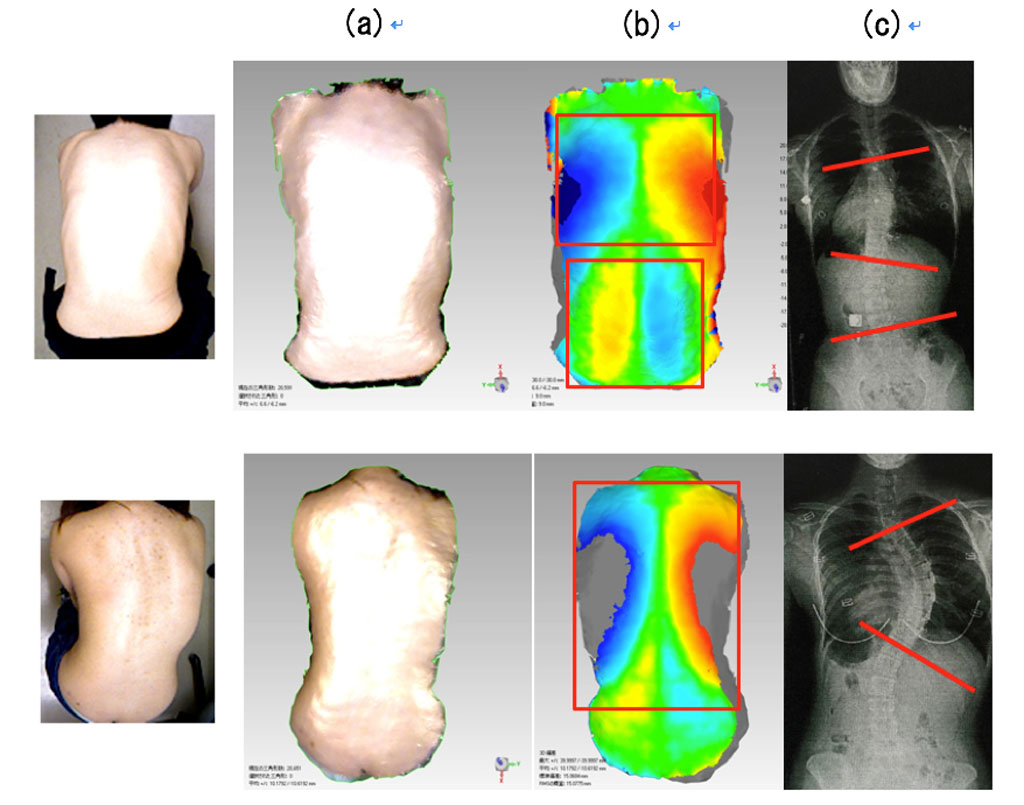Symmetry Recognition System Detects Spinal Deformity
By Daniel Beris
Posted on 09 Dec 2016
A novel imaging system scans the surface of the human back to three-dimensionally detect early stages of idiopathic scoliosis.Posted on 09 Dec 2016
Developed by researchers at Hokkaido University (Japan), the prototype device scans multiple points on the back, enabling the evaluation of the back’s symmetry from any angle in a few seconds to enable speedy and accurate detections of adolescent idiopathic scoliosis (AIS), a condition that can lead to a large curvature that is six times greater than normal, since their bodies are still in the process of developing, and hence are more vulnerable to curvature.

Image: An image analysis of AIS detects deviation from ideal symmetry, compared to X-ray (Photo courtesy of Hokkaido University/Noa).
The Japanese School Health and Safety Act stipulates that elementary and junior high schools conduct physical check-ups aimed at detecting AIS. However, the act leaves it up to the respective medical associations or education boards in each municipality to decide how to conduct the checks, giving rise to regional gaps in the detection rate. Another related problem is the burden placed on doctors, who have to examine a large number of students within a limited time frame.
To address these issues, associate professor Hideki Sudo, MD, of the Hokkaido University Graduate School of Medicine, and Professor Satoshi Kanai, PhD, of the Graduate School of Information Science and Technology developed the new system, which evaluates the level of asymmetry on the surface of the back without requiring the presence of a physician. The device is expected to go through clinical testing so that it can be used in clinics and for physical examinations at schools.
Scoliosis is a medical condition in which a person's spine is curved from side to side. Although it is a complex three-dimensional deformity, on an X-ray, viewed from the rear, the spine of an individual with scoliosis may look more like an "S" or a "C" than a straight line. Scoliosis is typically classified as congenital, idiopathic, or neuromuscular, when it has developed as a secondary symptom of another condition, such as spina bifida, cerebral palsy, spinal muscular atrophy, or physical trauma.
Related Links:
Hokkaido University














